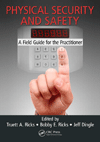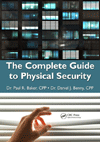The evolution of AI and physical security
.jpg?1699561131)
Image via Unsplash
When it comes to the most effective physical security strategies available to fight crime, remote video monitoring (RVM) sits near the top. The secret weapon? Artificial Intelligence (AI). AI has taken physical security from the reactive to the proactive era. It could make physical security smarter than ever seen before.
How have security leaders arrived at this point of “smart” physical security? And where can AI take them in the future? To answer that question, let’s look at the evolution of video backed physical security solutions over the years.
The age of record and save
Decades ago, closed-circuit television (CCTV) was the best option businesses had when it came to using video surveillance as part of their security strategy. The concept was simple: use surveillance cameras to provide a live feed across a business.
The problem? This footage was recorded, typically without anyone watching in real time, and stored for later viewing. High-end operations would have security guards watching the video, but as a standalone technology it was mostly reactive — a business owner could go back and review the footage for evidence and use it for insurance or law enforcement purposes, but the damage had already been done. And for businesses, this meant monetary loss and potential brand damage.
Video surveillance goes live
Eventually, CCTV evolved into remote video monitoring (RVM). RVM is similar in the way that it uses surveillance cameras to provide a live feed across a business. By connecting these cameras to the internet, RVM made it possible to view this footage remotely. As a result, businesses could pull up a live feed on their phones or computers or, even better, work with a video monitoring provider who could keep watch and take action in real time for them.
While this live monitoring element was a game-changer for the physical security industry, challenges remained. With cameras rolling 24/7 across multiple feeds per business, how could monitoring operators possibly watch every feed to spot suspicious behavior while filtering out false alarms? The answer — analytics and AI. In the context of RVM, analytics are software tools that can process video and other sensory information to identify activity of interest. The use of AI simply turbocharged what analytics can do.
Physical security gets smart with analytics and AI
It’s easy to understate the impact that analytics, especially AI-powered analytics, have had on RVM. They completely changed the game. Although computer vision was among the first practical applications of AI, in the RVM industry AI started adding material value only in the last decade. Advancements in AI technology have enabled wider adoption possible through reduction of cost, complexity and effort in applying AI to RVM.
Using AI, video surveillance starts transforming into a proactive process, where remote “virtual guards,” as part of an RVM strategy, are alerted by AI and take action before a crime occurs. By training AI models to detect certain events, like a person jumping a construction site fence in the night, actions can be taken to deter crime at the first sign of trouble. By activating deterrents like flashing lights, loud alarms and recorded announcements, businesses can now prevent crime in real time. And, as a last resort, law enforcement can be called to stop a determined criminal.
From proactive to predictive
Pairing AI with RVM brought physical security into the proactive era. Thanks to the continued evolution of AI, security leaders should assume this is only the beginning. AI’s next act will take physical security into the predictive era.
Eventually, AI models are expected to become smart enough to predict crime based on their ‘experience’ and ‘intuition’. As the RVM industry grows and matures, the massive scale of data inflow and decision making that happens on a daily basis can be utilized to ‘train’ AI to make predictions for times of the year, days of the week, or even a specific day.
Embrace the power of AI
The bottom line is that AI has transformed the way businesses approach physical security. Utilizing AI in security strategies has become a must to ensure the ultimate defense against thieves and vandals.
Looking for a reprint of this article?
From high-res PDFs to custom plaques, order your copy today!










